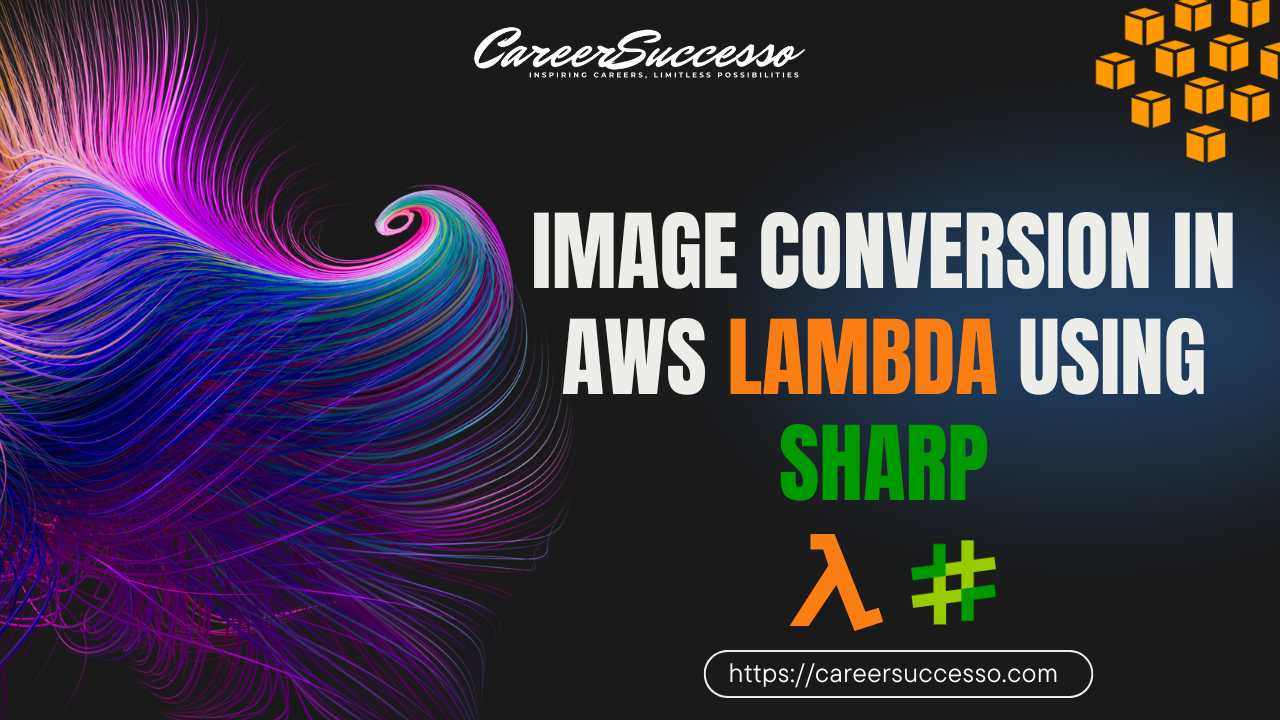Efficient Image Conversion in AWS Lambda Using Sharp and Lambda Layers

In modern web applications, handling images efficiently is crucial, whether you're building e-commerce platforms, content-sharing sites, or any other service where images are prevalent. One of the most powerful tools for image processing in Node.js applications is the Sharp library, known for its performance and versatility. Coupling this with AWS Lambda can result in a cost-effective, scalable, and serverless solution for managing images.
In this post, I will walk you through setting up a serverless image processing pipeline using AWS Lambda, S3, and Sharp. We will discuss how Lambda Layers are essential for this solution, especially in cross-platform deployment scenarios, and how to configure them for optimal performance.
Why Use Lambda Layers for Sharp?
The Platform Mismatch Problem
When you install the Sharp library on macOS using the usual NPM command (npm install sharp), the installer automatically adds binaries compiled for macOS. These binaries are specific to your local operating system (OS X), but AWS Lambda functions run on Amazon Linux 2 environments with x64 processors. This platform mismatch leads to errors when deploying the Sharp library to Lambda.
So, if you directly deploy your Lambda function with the macOS binaries of Sharp, you’ll encounter a failure because AWS Lambda will attempt to run Linux binaries, not macOS ones. The solution to this problem involves installing the Sharp library with the appropriate Linux binaries before deploying to Lambda.
Here’s the recommended process:
- Uninstall Sharp completely from your local environment to remove the macOS-specific binaries.
- Install Sharp for the Linux platform by running:cssCopy code
npm install --arch=x64 --platform=linux sharp
This ensures that the binaries are built specifically for Lambda’s Linux environment, eliminating the risk of platform incompatibility.
Leveraging Lambda Layers for Efficiency
While the cross-platform installation addresses the binary mismatch, Lambda Layers provide an even more efficient solution. Lambda Layers allow you to package dependencies like Sharp separately from your main function code, which reduces deployment package size and improves maintainability.
By placing Sharp in a Lambda Layer, you can:
- Reuse the Sharp library across multiple Lambda functions without having to package it with each function.
- Reduce your deployment package size, helping you stay under AWS Lambda's 250MB limit.
- Streamline updates, as you only need to update the layer when Sharp’s version changes rather than every individual Lambda function.
Deployment Package Size Limits
One of the benefits of using Lambda Layers is that they help you avoid deployment package size limits. AWS imposes a maximum size limit of 250MB for Lambda deployment packages, which includes all dependencies. Sharp, being a native library with compiled binaries, can add significant weight to your package. By moving Sharp and other large libraries into a Lambda Layer, you reduce your deployment package size, making your Lambda function faster to deploy and easier to manage.
Performance Optimization in AWS Lambda
Image processing is a resource-intensive task. Lambda functions come with limited memory and CPU resources, so optimizing performance is essential to ensure quick and efficient execution of your functions. The performance of Sharp and other native libraries depends heavily on the amount of memory allocated to the function.
For example, allocating 1536MB of memory to your Lambda function provides significantly more CPU power than the minimum allocation of 128MB. More CPU translates to faster image processing, reducing the execution time for tasks like image conversion or resizing. By adjusting the memory allocation, you can achieve the best balance between cost and performance for your use case.
Cross-Platform Build Considerations
When deploying AWS Lambda functions, it’s crucial to ensure that all dependencies are built for the correct environment. This is particularly relevant when your development environment differs from the AWS Lambda environment. On a macOS or Windows machine, building Node.js dependencies will compile them for the local operating system, which won't work in AWS Lambda’s Linux environment.
Lambda Layers alleviate this issue by allowing you to pre-build Sharp and other dependencies for the Linux environment, independent of the main function's deployment. This way, you can focus on your function code and ensure that your binary dependencies are already compatible with AWS Lambda.
Setting Up the Image Processing Pipeline
The architecture of this solution involves using S3 as the storage layer for both original and processed images, and AWS Lambda as the compute layer where Sharp performs image transformations.
Here’s how it works:
- Image Upload: A user uploads an image to an S3 bucket.
- S3 Event Trigger: The S3 bucket triggers an AWS Lambda function to start processing the uploaded image.
- Image Processing with Sharp: The Lambda function uses Sharp (loaded via Lambda Layer) to convert the image to different formats and adjust its quality.
- Storage of Processed Images: The processed images are saved back to the S3 bucket in the appropriate location for later retrieval.
This pipeline is not only scalable but also cost-efficient due to AWS’s pay-as-you-go pricing model.
Conclusion
Building an image processing solution with AWS Lambda, S3, and Sharp provides an effective and scalable approach to handling image transformations in the cloud. While Sharp is an excellent library for image processing, it’s important to manage the cross-platform challenges posed by AWS Lambda’s Linux environment. Installing Sharp with the correct binaries for Lambda and leveraging Lambda Layers for efficient deployment allows you to create a robust image processing pipeline.
By utilizing these strategies, you can ensure that your image processing system is both efficient and optimized for serverless workloads. Whether you're developing an e-commerce site, a content-sharing platform, or any application requiring image manipulation, this setup can help you achieve your goals with minimal overhead.





